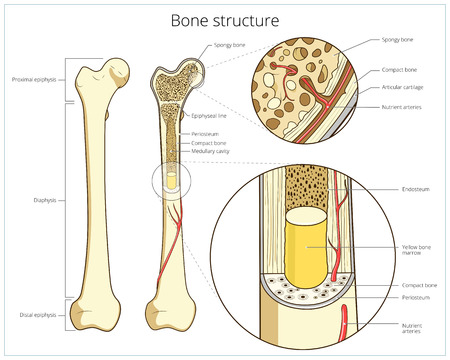1. Origins of Tai Chi and Qigong in Ancient China
Tai Chi (Taijiquan) and Qigong are deeply rooted in the ancient philosophical and spiritual traditions of China, with their histories stretching back several centuries. The origins of these practices can be traced to Daoist and Confucian schools of thought, which emphasised harmony between mind, body, and nature. In the early dynastic periods, Chinese scholars and sages began to explore ways to cultivate internal energy, known as “qi”, believing that a balanced flow of this vital force was essential for health and longevity. Qigong emerged as a collection of breathing techniques, meditative movements, and postures designed to nurture this inner vitality. Meanwhile, Tai Chi evolved as both a martial art and a moving meditation, grounded in the principles of yin and yang—the interplay of opposing yet complementary forces. Over time, these disciplines were refined within temples, villages, and family lineages, each adding layers of practical skill and philosophical insight. Their development was influenced not only by Daoist alchemy but also by Buddhist mindfulness practices and Confucian ethical ideals. This rich tapestry of influences gave rise to practices that are not only physical exercises but also profound methods for cultivating mental clarity and spiritual well-being. Today, Tai Chi and Qigong continue to be respected pillars of Chinese heritage, with their ancient wisdom finding new resonance among modern practitioners worldwide—including those here in the UK.
2. Philosophical Foundations: Taoism, Confucianism, and Traditional Chinese Medicine
To appreciate the continued appeal and evolving practice of Tai Chi and Qigong in the UK, it is essential to explore their philosophical and medical underpinnings. These practices are deeply rooted in the ancient traditions of Taoism, Confucianism, and Traditional Chinese Medicine (TCM). Each philosophy contributes distinct perspectives that inform both the physical movements and the meditative aspects of these arts.
Taoism: Harmony with Nature
Taoism, or Daoism, provides the backbone for the concept of “qi” (life energy) and advocates living in harmony with the Tao—the natural order of the universe. The foundational text, the Tao Te Ching by Laozi, emphasises yielding, softness, balance, and non-contention—qualities mirrored in Tai Chi’s gentle, flowing movements. This philosophical orientation resonates with many British practitioners who seek mindful exercise that aligns with holistic well-being rather than aggressive competition.
Confucian Influence: Social Harmony and Discipline
While Taoism focuses on cosmic harmony, Confucianism brings emphasis to social order, self-cultivation, and respect for tradition. In the context of Tai Chi and Qigong, this translates into a disciplined approach to learning forms, respect for teachers (“sifu”), and an appreciation for continuous personal improvement—values that mesh well with the UK’s own traditions of education and structured group activities.
Traditional Chinese Medicine: The Science of Balance
Traditional Chinese Medicine offers a practical framework for understanding how Tai Chi and Qigong support health. Central concepts include balancing yin and yang energies within the body, maintaining smooth flow of qi through meridians (energy channels), and preventing illness through holistic lifestyle practices. For many people in Britain seeking alternatives to Western medicine or complementary therapies, these ideas present an appealing pathway to preventive health.
Key Concepts from Philosophy and TCM
| Philosophy/Medicine | Key Concept | Influence on Practice |
|---|---|---|
| Taoism | Harmony with nature; Wu Wei (effortless action) | Gentle movement; focus on flow and relaxation |
| Confucianism | Self-cultivation; Respect for hierarchy | Structured learning; teacher-student relationships |
| Traditional Chinese Medicine | Qi; Yin-Yang balance; Meridians | Breathing exercises; postural alignment; health maintenance |
The British Context: Integrating East and West
The integration of these philosophies into daily life in the UK has encouraged a more holistic approach to health. Many local clubs, community centres, and wellness groups now offer classes that blend traditional teachings with scientific explanations suited to a British audience. This synthesis ensures that while Tai Chi and Qigong remain true to their roots, they also adapt thoughtfully to local needs—bridging ancient wisdom with contemporary lifestyles.

3. Principles of Practice: Movement, Breath, and Mindfulness
At the heart of both Tai Chi and Qigong lies a triad of core principles: movement, breath, and mindfulness. These elements are not isolated; rather, they weave together to create a holistic practice that has resonated with practitioners across the UK. Unlike many forms of exercise that focus solely on physical exertion, Tai Chi and Qigong emphasise the quality and intention behind each motion. In parks across London or community halls in Manchester, you may witness slow, deliberate movements that appear almost meditative in nature. This is no coincidence — the choreography of Tai Chi and the gentle routines of Qigong are specifically designed to cultivate balance, flexibility, and internal energy flow.
Movement: The Foundation of Flow
The movement sequences in Tai Chi often draw from martial traditions, but their execution today is soft, fluid, and continuous. Each posture transitions smoothly into the next, encouraging practitioners to maintain a sense of rootedness while remaining light on their feet. Similarly, Qigong utilises repetitive gestures and stances that gently mobilise joints and open the body’s energy channels, known as meridians. For many in the UK, these movements provide a welcome antidote to modern sedentary lifestyles.
Breath Control: Cultivating Vital Energy
Breathing is considered the bridge between body and mind in both practices. Instructors frequently remind students to synchronise inhalation and exhalation with specific movements. Deep abdominal breathing helps calm the nervous system and fosters an awareness of qi — the life force believed to animate all living things. Within British classes, this focus on breath provides a practical tool for managing stress and enhancing overall well-being.
Mindfulness: Presence in Every Moment
Perhaps most significant is the cultivation of mindfulness. Whether through guided visualisations or simply paying attention to bodily sensations, practitioners learn to anchor themselves in the present moment. This mental clarity is valued just as much as physical technique; it transforms routine exercise into a moving meditation. As interest in holistic health continues to rise throughout the UK, the mindful aspect of Tai Chi and Qigong resonates with those seeking balance amidst daily pressures.
4. The Journey to the West: Introduction of Tai Chi and Qigong to the UK
Tai Chi and Qigong, once rooted firmly in Chinese soil, began their journey to British shores in the latter half of the twentieth century. This migration was fuelled by a growing curiosity about Eastern philosophies and holistic health, particularly from the 1960s onwards. The UK, with its long-standing tradition of embracing global influences, proved fertile ground for these practices to take root and flourish.
Pivotal Figures in the UK Movement
Several key individuals played transformative roles in establishing Tai Chi and Qigong in Britain. Among them, Master Cheng Man-ch’ing’s students stand out. Cheng Man-ch’ing, renowned for simplifying and popularising the Yang style, sent pupils such as Dr. Chi Chiang-tao and John Kells to Europe. John Kells, in particular, became instrumental in founding some of Britain’s earliest Tai Chi schools during the 1970s.
Significant Milestones
The evolution of Tai Chi and Qigong in the UK can be traced through several milestones:
| Year | Event | Impact |
|---|---|---|
| 1971 | Founding of the British Tai Chi Chuan Association | Established a national platform for practitioners and instructors |
| 1980s | Introduction of Qigong classes by Chinese medical practitioners | Brought medical Qigong into mainstream awareness for health benefits |
| 1990s | Tai Chi included in NHS health and wellbeing programmes | Recognition by public health institutions increased legitimacy |
| 2000s–present | Growth of community clubs and university societies across the UK | Diversification and accessibility for all age groups and backgrounds |
Cultural Integration and Adaptation
The British approach to Tai Chi and Qigong has always reflected a blend of respect for tradition with a pragmatic openness to adaptation. Early practitioners focused on faithfully transmitting forms learned from Chinese masters; over time, however, local teachers have innovated, tailoring sessions for stress management, elderly care, and even corporate wellbeing. This adaptability ensured that these ancient arts were not mere cultural imports but living practices that resonated with modern British life.
5. Modern Practice and Community in the UK
Today, Tai Chi and Qigong have firmly established themselves within Britain’s diverse cultural landscape. These ancient practices are no longer the preserve of small, specialist groups but have expanded to a wide range of communities, reflecting both adaptation and innovation within the UK context.
Cultural Adaptation and Integration
Across cities and rural towns alike, British practitioners have embraced Tai Chi and Qigong by blending traditional Chinese philosophy with local customs and sensibilities. Classes are frequently held in community centres, parks, village halls, and even NHS health programmes, adapting terminology and teaching methods for accessibility. This localisation has seen instructors use plain English explanations alongside traditional Chinese concepts, making these arts approachable for people from all walks of life.
Social Groups and Inclusivity
Tai Chi and Qigong communities in the UK are notably inclusive, attracting people of varying ages, backgrounds, and physical abilities. Many groups emphasise social connection as much as physical practice: regular meet-ups often extend beyond training sessions to include tea breaks, charity events, and support networks. These activities foster a strong sense of belonging and mutual encouragement—a particularly valued feature in British society.
Public Health Initiatives
Public health bodies across the UK increasingly recognise the mental and physical health benefits offered by Tai Chi and Qigong. Local councils sponsor classes aimed at fall prevention among older adults, stress reduction for busy professionals, and rehabilitation for those recovering from illness or injury. Research-led projects have also partnered with universities to explore how these practices can address issues such as anxiety, arthritis, and cardiovascular health. As a result, participation is growing not only among enthusiasts but also among those referred through healthcare providers.
A Dynamic Future
The British approach to Tai Chi and Qigong reflects a unique blend of respect for ancient roots and willingness to adapt for modern needs. From multicultural festivals in London to weekly sessions in remote Scottish villages, these practices continue to evolve—shaped by both tradition and the open-minded curiosity characteristic of the UK’s broader wellness culture.
6. Benefits, Challenges, and the Future of Tai Chi and Qigong in the UK
Health and Social Benefits
Tai Chi and Qigong have steadily gained popularity across the UK for their proven health benefits, which resonate with people from all walks of life. Practitioners often report enhanced balance, flexibility, and strength—qualities particularly valued among older adults seeking to maintain independence. Scientific studies conducted in Britain support these claims, linking regular practice with improved cardiovascular health, reduced stress, and better mental wellbeing. Beyond the physical gains, many UK-based groups emphasise the social benefits: classes offer a sense of community, reducing isolation while fostering intergenerational connections. These practices have increasingly been incorporated into NHS-supported health initiatives and local council well-being programmes, reflecting growing recognition of their holistic value.
Current Challenges
Despite these advantages, Tai Chi and Qigong face several challenges within the British context. One notable issue is public awareness—many still perceive these disciplines as niche or esoteric, rather than as accessible activities suitable for all ages and backgrounds. There is also a shortage of qualified instructors who can bridge cultural gaps and adapt traditional teachings to suit local needs. Regulatory ambiguity regarding teaching standards sometimes leads to inconsistent quality of instruction, potentially undermining the credibility of both arts. Moreover, busy modern lifestyles and competing leisure activities can make it difficult for newcomers to commit to regular practice.
The Potential Trajectory
Looking ahead, the future for Tai Chi and Qigong in the UK appears promising yet complex. As interest in preventative healthcare continues to rise, these ancient practices are well-placed to contribute positively to public health strategies. Partnerships between local councils, community centres, and healthcare providers may expand access further, especially if tailored outreach addresses misconceptions and highlights inclusivity. Digital platforms—already instrumental during recent lockdowns—offer new ways to connect teachers with students across the country. However, ongoing efforts are needed to ensure high-quality instruction and culturally sensitive adaptation without losing sight of core philosophies. If these challenges are met thoughtfully, Tai Chi and Qigong could become even more deeply embedded in British daily life—not only as forms of exercise but as enduring sources of wellbeing and social connection.


